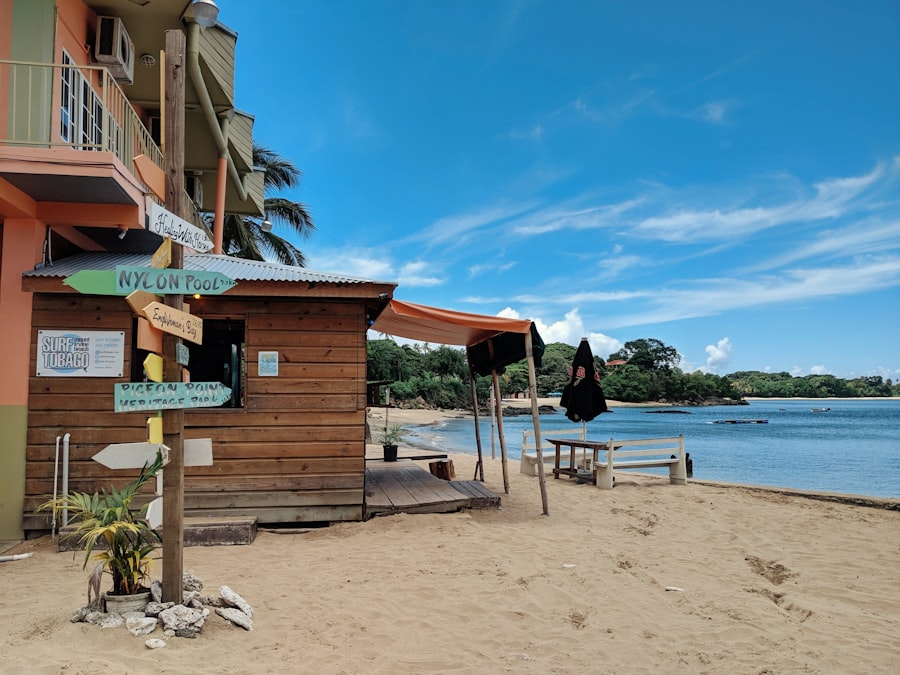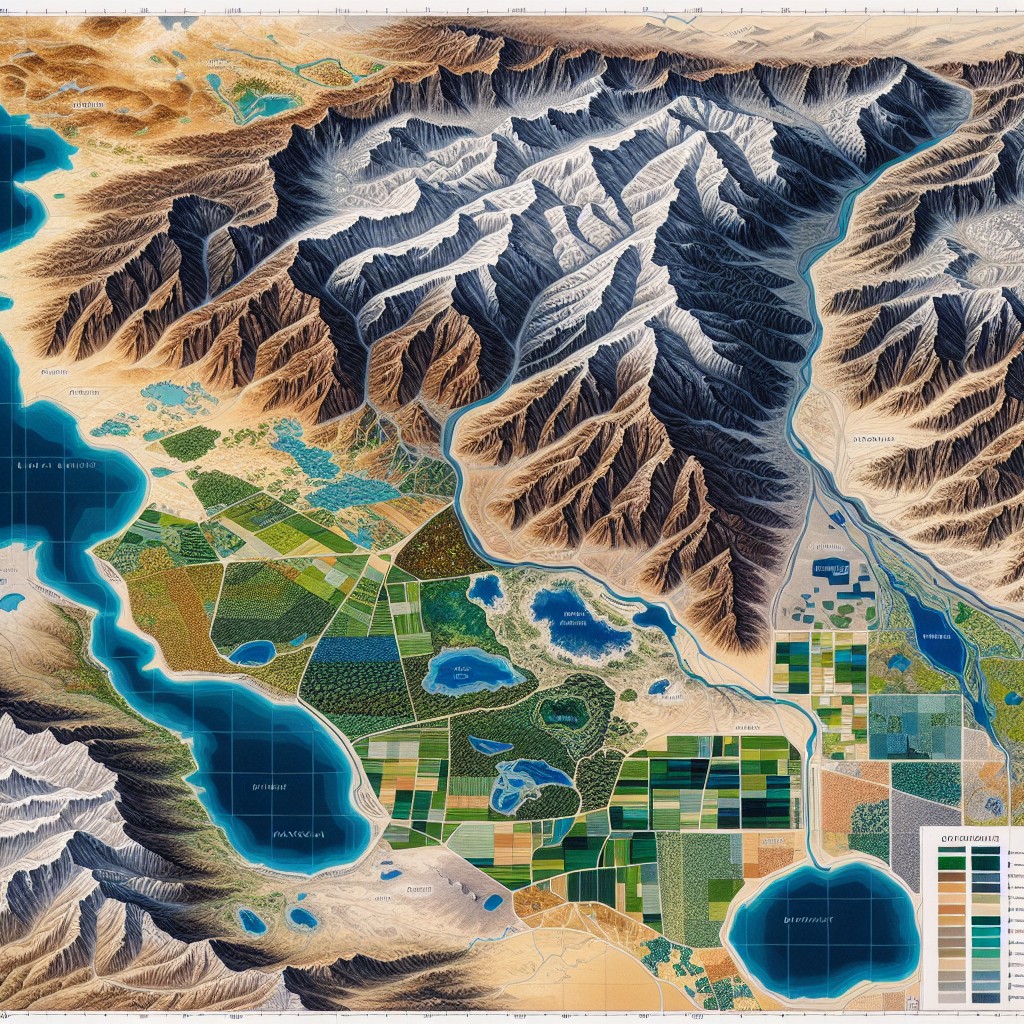Trinidad and Tobago is a vibrant and diverse travel destination located in the southern Caribbean. While it may be known for its lively Carnival celebrations and beautiful beaches, there are many lesser-known attractions and experiences that make this country a hidden gem for travellers. From its rich cultural heritage to its stunning natural wonders, Trinidad and Tobago offers a unique and unforgettable experience for those willing to explore beyond the beaten path.
Summary
- Trinidad and Tobago is a treasure trove of cultural, natural, and historical wonders waiting to be explored.
- The country’s unique blend of African, Indian, and European influences is reflected in its vibrant festivals, delicious cuisine, and rich heritage.
- From pristine beaches to lush rainforests, Trinidad and Tobago offers a diverse range of natural wonders for nature lovers to discover.
- The country’s festivals are a celebration of music, dance, and colour, and offer a glimpse into its rich cultural heritage.
- Trinidad and Tobago is a paradise for adventure seekers, with activities ranging from hiking to scuba diving.
The Cultural Riches of Trinidad and Tobago: A Fusion of African, Indian, and European Influences
Trinidad and Tobago’s cultural heritage is a melting pot of African, Indian, and European influences. The country’s history is marked by colonization, slavery, and indentured labour, which brought people from various backgrounds to the islands. This diverse mix of cultures has shaped the music, dance, and art of Trinidad and Tobago.
One of the most famous cultural exports from Trinidad and Tobago is calypso music. Originating from African slaves who used music as a form of communication and resistance, calypso has evolved into a vibrant genre that reflects the social and political issues of the islands. Another popular musical style is soca, which blends calypso with elements of soul, funk, and reggae.
Dance is also an integral part of Trinidad and Tobago’s culture. The national dance of Trinidad is the limbo, which originated from West African slaves who were brought to the island. Today, the limbo is performed at festivals and events, showcasing the country’s rich cultural heritage.
In addition to music and dance, Trinidad and Tobago is also known for its vibrant art scene. The islands are home to many talented artists who draw inspiration from their surroundings to create unique works of art. From colourful paintings depicting local scenes to intricate sculptures made from natural materials, the art of Trinidad and Tobago is a reflection of the country’s diverse cultural influences.
Exploring the Natural Wonders of Trinidad and Tobago: From Pristine Beaches to Lush Rainforests
Trinidad and Tobago is blessed with an abundance of natural beauty, from pristine beaches to lush rainforests. Tobago, in particular, is known for its stunning beaches with crystal-clear waters and powdery white sand. Pigeon Point Beach is one of the most popular beaches in Tobago, offering a picturesque setting for swimming, sunbathing, and water sports.
For those who prefer to explore nature on land, Trinidad’s rainforests are a must-visit. The island is home to several national parks and nature reserves, including the Asa Wright Nature Centre and the Caroni Bird Sanctuary. These protected areas offer opportunities for hiking, birdwatching, and wildlife spotting.
Trinidad and Tobago also boast a diverse range of wildlife. The islands are home to over 400 species of birds, making it a paradise for birdwatchers. The Scarlet Ibis, Trinidad’s national bird, can be seen in large flocks at the Caroni Bird Sanctuary. Other wildlife that can be spotted in Trinidad and Tobago include monkeys, reptiles, and marine life such as turtles and dolphins.
Trinidad and Tobago’s Vibrant Festivals: A Celebration of Music, Dance, and Colour
| Festival Name | Location | Date | Duration | Attendance |
|---|---|---|---|---|
| Carnival | Port of Spain | February/March | 2 days | Over 1 million |
| Divali Nagar | Chaguanas | October/November | 9 days | Over 100,000 |
| Tobago Heritage Festival | Tobago | July/August | 2 weeks | Over 10,000 |
| Phagwah | Various locations | March | 1 day | Over 10,000 |
Trinidad and Tobago is renowned for its vibrant festivals that showcase the country’s rich cultural heritage. The most famous of these festivals is Carnival, which takes place in February or March each year. Carnival is a two-day celebration filled with music, dance, and elaborate costumes. The streets come alive with the sounds of soca music as masqueraders parade through the streets in colourful costumes.
In addition to Carnival, there are many other festivals and events throughout the year that highlight Trinidad and Tobago’s vibrant culture. The Divali Nagar, held in October or November, is a celebration of the Hindu festival of lights. The event features live performances, cultural displays, and traditional Indian cuisine.
Another popular festival is the Tobago Heritage Festival, which takes place in July and August. This month-long celebration showcases the unique heritage of Tobago through music, dance, food, and traditional crafts. Visitors can immerse themselves in the local culture and learn about the island’s history and traditions.
The Flavours of Trinidad and Tobago: A Culinary Journey Through the Caribbean’s Spice Capital
Trinidad and Tobago is often referred to as the “spice capital” of the Caribbean due to its rich culinary heritage. The country’s cuisine is a fusion of African, Indian, Chinese, and European influences, resulting in a unique blend of flavours and spices.
One of the most popular dishes in Trinidad and Tobago is roti, a flatbread filled with curried meat or vegetables. Another must-try dish is doubles, a street food made with fried bread and filled with curried chickpeas. For seafood lovers, the national dish of Trinidad and Tobago is callaloo and crab, a hearty stew made with leafy greens and fresh crab meat.
Trinidad and Tobago is also known for its wide variety of street food. From bake and shark to corn soup, there are plenty of delicious snacks to try while exploring the islands. Local markets such as the Queen’s Park Savannah in Port of Spain offer a wide selection of fresh produce, spices, and local delicacies.
Trinidad and Tobago’s History and Heritage: From Colonialism to Independence

Trinidad and Tobago has a rich history that spans centuries. The islands were originally inhabited by indigenous peoples before being colonized by European powers. The Spanish were the first to establish a settlement in Trinidad in the 16th century, followed by the French and the British.
The islands were heavily influenced by the sugar industry, which brought African slaves to work on the plantations. The abolition of slavery in 1834 led to an influx of indentured labourers from India, China, and other parts of the world. This diverse mix of cultures has shaped the identity of Trinidad and Tobago.
Trinidad and Tobago gained independence from Britain in 1962 and became a republic in 1976. Today, the country celebrates its independence with a public holiday on August 31st. Visitors can learn about the country’s history and heritage by visiting historical sites and landmarks such as Fort George in Port of Spain and the Tobago Museum.
Getting Off the Beaten Path: Discovering Trinidad and Tobago’s Hidden Gems
While Trinidad and Tobago is known for its popular attractions, there are many hidden gems that are worth exploring. One such gem is the island of Gaspar Grande, located off the coast of Trinidad. This small island is home to the Gasparee Caves, a network of limestone caves that can be explored on a guided tour.
Another hidden gem is the village of Paramin, located in the hills of Trinidad. This picturesque village is known for its vibrant culture and traditional Carnival celebrations. Visitors can immerse themselves in the local way of life by attending a steelpan practice or sampling traditional dishes at a local restaurant.
For nature lovers, a visit to the Nariva Swamp in Trinidad is a must. This protected area is home to a diverse range of wildlife, including caimans, snakes, and birds. Guided tours are available for those who want to explore the swamp and learn about its unique ecosystem.
Trinidad and Tobago’s Wildlife and Marine Life: A Paradise for Nature Lovers
Trinidad and Tobago is a paradise for nature lovers, with its diverse range of wildlife and marine life. The islands are home to several nature reserves and parks that offer opportunities for wildlife spotting and birdwatching.
One of the most popular nature reserves in Trinidad is the Asa Wright Nature Centre. Located in the Northern Range, this 1,500-acre reserve is home to over 400 species of birds, including the rare oilbird. Visitors can explore the trails and enjoy breathtaking views of the surrounding rainforest.
In Tobago, the Main Ridge Forest Reserve is a must-visit for nature enthusiasts. This protected area is the oldest forest reserve in the Western Hemisphere and is home to a wide variety of flora and fauna. Guided hikes are available for those who want to explore the reserve and learn about its unique ecosystem.
Trinidad and Tobago’s marine life is equally impressive, with its coral reefs and diverse range of fish species. Buccoo Reef in Tobago is one of the most popular snorkelling and diving spots in the Caribbean. Visitors can explore the vibrant coral gardens and swim alongside colourful fish and sea turtles.
Adventure Activities in Trinidad and Tobago: From Hiking to Scuba Diving
Trinidad and Tobago offers a wide range of adventure activities for thrill-seekers. Hiking is a popular activity, with many trails that lead to stunning viewpoints and waterfalls. The Paria Waterfall in Trinidad is one of the most famous hiking destinations, offering a challenging but rewarding trek through lush rainforest.
For those who prefer to explore underwater, scuba diving is a must-do activity in Trinidad and Tobago. The islands are surrounded by coral reefs teeming with marine life, making it an ideal destination for diving enthusiasts. There are several dive operators that offer guided dives for all levels of experience.
Other adventure activities in Trinidad and Tobago include kayaking, zip-lining, and off-road biking. The islands’ diverse landscapes provide plenty of opportunities for outdoor exploration and adrenaline-pumping adventures.
Planning Your Trip to Trinidad and Tobago: Tips and Recommendations for a Memorable Experience
When planning a trip to Trinidad and Tobago, it is important to consider the best time to visit. The islands have a tropical climate, with the dry season from January to May and the rainy season from June to December. The Carnival season in February or March is a popular time to visit, but it is also the busiest and most expensive time of the year.
In terms of accommodations, there are a wide range of options available in Trinidad and Tobago, from luxury resorts to budget guesthouses. It is recommended to book accommodations in advance, especially during peak travel seasons.
Transportation in Trinidad and Tobago is relatively easy, with a well-developed road network and public transportation system. Renting a car is a popular option for those who want to explore the islands at their own pace. Taxis and buses are also available for getting around.
To make the most of your visit to Trinidad and Tobago, it is recommended to plan your itinerary in advance. Research the attractions and activities that interest you and allocate enough time for each. Don’t forget to leave some room for spontaneity and exploration, as some of the best experiences can be found off the beaten path.
In conclusion, Trinidad and Tobago is a hidden gem in the Caribbean that offers a unique blend of cultural richness, natural beauty, and adventure. From its diverse cultural heritage to its stunning beaches and rainforests, there is something for everyone in this vibrant country. Whether you’re exploring the hidden gems or immersing yourself in the local culture, Trinidad and Tobago promises an unforgettable experience that will leave you wanting more.
FAQs
What is Trinidad and Tobago?
Trinidad and Tobago is a twin-island country located in the southern Caribbean Sea. It is the southernmost island country in the Caribbean and is situated just off the coast of Venezuela.
What is the population of Trinidad and Tobago?
As of 2021, the estimated population of Trinidad and Tobago is approximately 1.4 million people.
What is the official language of Trinidad and Tobago?
The official language of Trinidad and Tobago is English. However, Trinidadian Creole, also known as Trinidadian English Creole, is widely spoken by the locals.
What is the currency used in Trinidad and Tobago?
The currency used in Trinidad and Tobago is the Trinidad and Tobago dollar (TTD).
What is the climate like in Trinidad and Tobago?
Trinidad and Tobago has a tropical climate with two seasons: a wet season from June to December and a dry season from January to May. The average temperature ranges from 23°C to 32°C.
What are some popular tourist attractions in Trinidad and Tobago?
Some popular tourist attractions in Trinidad and Tobago include Maracas Beach, Pigeon Point Beach, the Caroni Bird Sanctuary, the Pitch Lake, and the Asa Wright Nature Centre.
What is the main industry in Trinidad and Tobago?
The main industry in Trinidad and Tobago is petroleum and petrochemicals. The country is one of the leading producers of oil and natural gas in the Caribbean region.


